The Flower Moon is the name given to the full Moon in May, which you'll be able to see rise tonight, 12 May 2025 at 21:28 BST.
This May 2025 full Moon is also a 'micromoon', because it's at its furthest point from Earth, making it appear smaller than usual.
A bright full Moon is one of the most beautiful, arresting sights in nature, and luckily we get to see one once a month.
Find out when the next full Moon is occurring and sign up to the BBC Sky at Night Magazine e-newsletter for weekly stargazing advice delivered to your inbox.

Not every stargazer or astronomer would agree with you, though.
A bright full Moon makes targets like meteor showers and deep-sky objects like galaxies and nebulae harder to see, so often you'll find practical astronomers prefer to observe the night sky when the Moon is out of the way.
That aside, a full Moon is a beautiful sight, and certainly something worth taking the time to gaze at every month.
In this guide we'll look at what the Flower Moon actually means, when to see it and how to make the most of it.
Download our lunar phases poster 2025 (PDF) for a printable guide to help you keep track of the Moon in 2025.

Why it's called a Flower Moon
The term Flower Moon, while it sounds very romantic, doesn't actually mean the full Moon will look any different compared to other full Moons.
Flower Moon is thought to be a reference to the fact that it's May's full Moon, May being the time when flowers begin to bloom in earnest and spring is well and truly in full swing.
Each full Moon of the year has its own informal nickname, ranging from the innocent-sounding Pink Moon and Strawberry Moon to slightly more wild Wolf Moon and Hunter's Moon.
So no, the Flower Moon won't look like a flower or any such fantasy! It will look like your average full Moon.

Observing the Flower Moon
From the UK, the 2025 Flower Moon will rise in the southeast and will be visible from about 21:28 BST on 12 May.
It will be beneath the constellation Libra and won't rise very high in the sky, meaning a clear horizon will be of benefit.
The Moon will then work its way across the southern part of the sky, before setting in the southwest in the early hours around dawn.
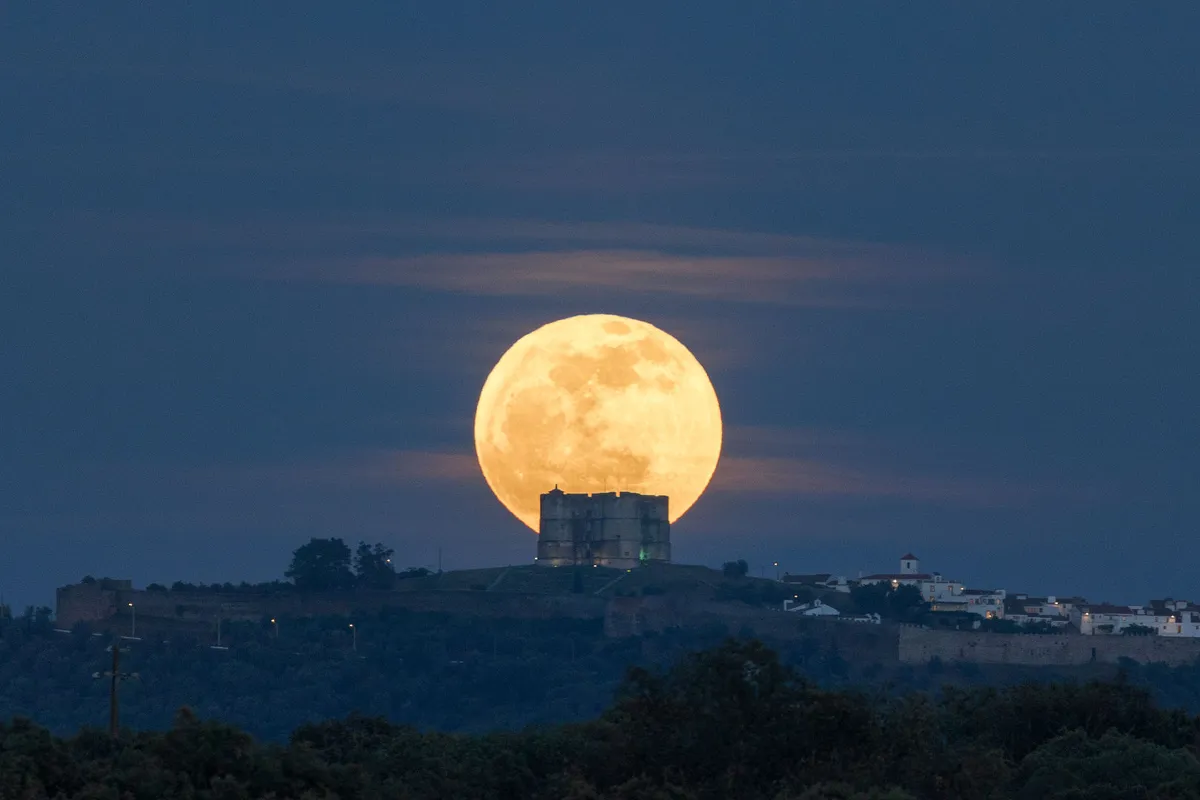
A micromoon
May 2025's full Moon, the Flower Moon, is what's known as a 'micromoon'.
It's named as such because it's further away from Earth than normal, and this is all to do with the Moon's orbit around Earth.
The Moon orbits Earth in an elliptical – or egg-shaped – path, so sometimes the Moon is closer to Earth than at other times.
This 2025 Flower Moon occurs at 'apogee', the point at which the Moon is furthest from Earth in its orbit.
An apogee Moon appears around 14.1% smaller and 30% dimmer than the Moon at 'perigee' – when it's closest to Earth – and leads to 5cm smaller spring tides.
Take a look at the Flower Moon. Does it seem smaller to you?
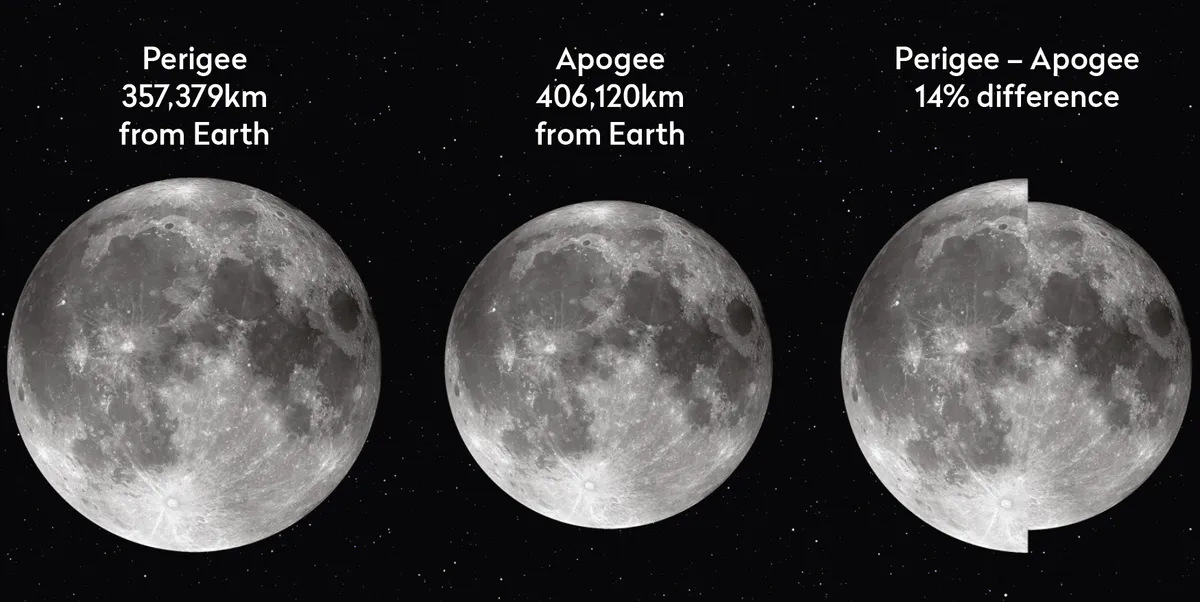
Should you observe a full Moon?
Often you'll head astronomers and stargazers saying the Moon is at its worst for observation when its full, and that a crescent or gibbous phase is much better.
This is because during these phases the terminator - the line dividing the lit and unlit portions of the Moon - throws light and shadow on lunar features, making them much easier to see.
During a full Moon the surface of the Moon is flooded in light, making its topography much more difficult to discern.
And yet a full Moon is a beautiful thing, and something a lot of us take for granted, if we're honest.
In the days before street lighting, the bright full Moon must have been a welcome companion for people making journeys at night.
It is a beautiful target to observe and a great one for kids and newcomers to astronomy.
Find out more about this in our guide on what to see during a full Moon and scroll down for more ideas.
The Moon illusion
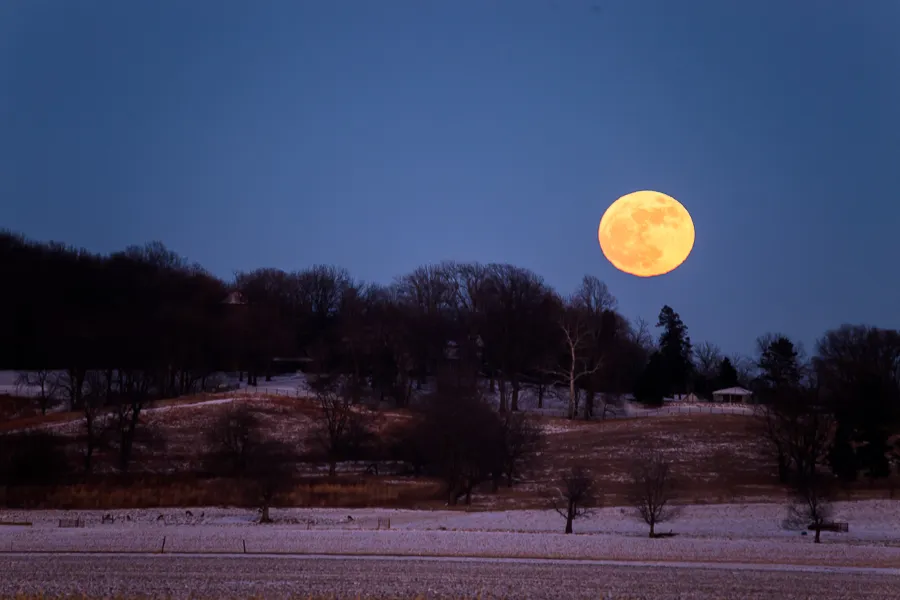
The Moon illusion is the name given to the fact that a full Moon close to the horizon looks especially large.
The apparent size of the Moon is so much bigger when it's low down, and the effect of this can be quite startling.
This is an optical illusion and is probably caused by the fact that the Moon is much closer to foreground objects like trees and buildings, and so seems to dwarf them, emphasising the Moon's size.
Observe the Flower Moon rising at the end of May and see if it looks much bigger to you.
An orange Moon
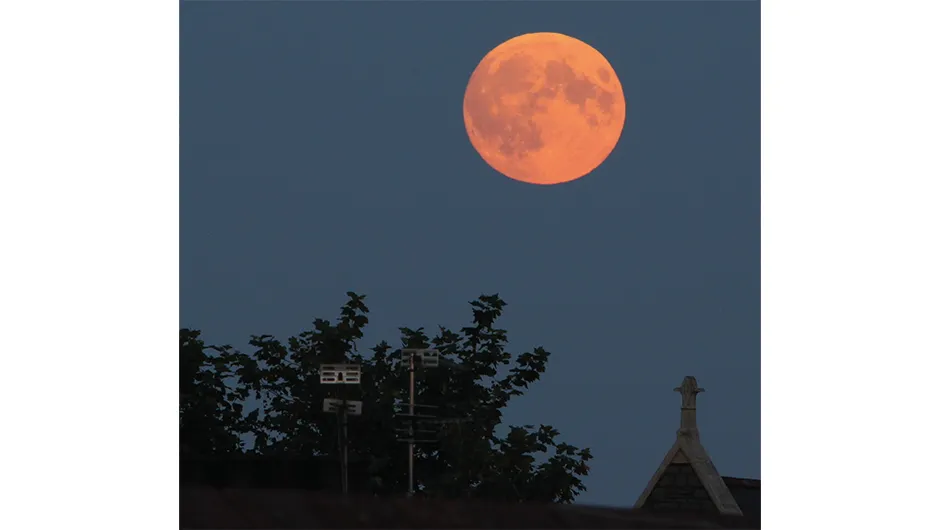
The Flower Moon may be an orange Moon, if you catch it right.
Another phenomenon that occurs when the Moon is close to the horizon is that it can sometimes appear rust-coloured.
Low down, the Moon appears orange or red, and this is to do with sunlight bouncing off the Moon and passing through Earth's atmosphere.
When it's closer to the horizon, Moonlight has to pass through a thicker part of Earth's atmosphere to get to our retinas.
This causes scattering of blue and violet light, meaning that what Moonlight does make it through appears redder.
Take a look at the Flower Moon when it's rising and setting. Does it appear huge and orange? That's the Moon illusion and an orange Moon in one go!
Lunar halo
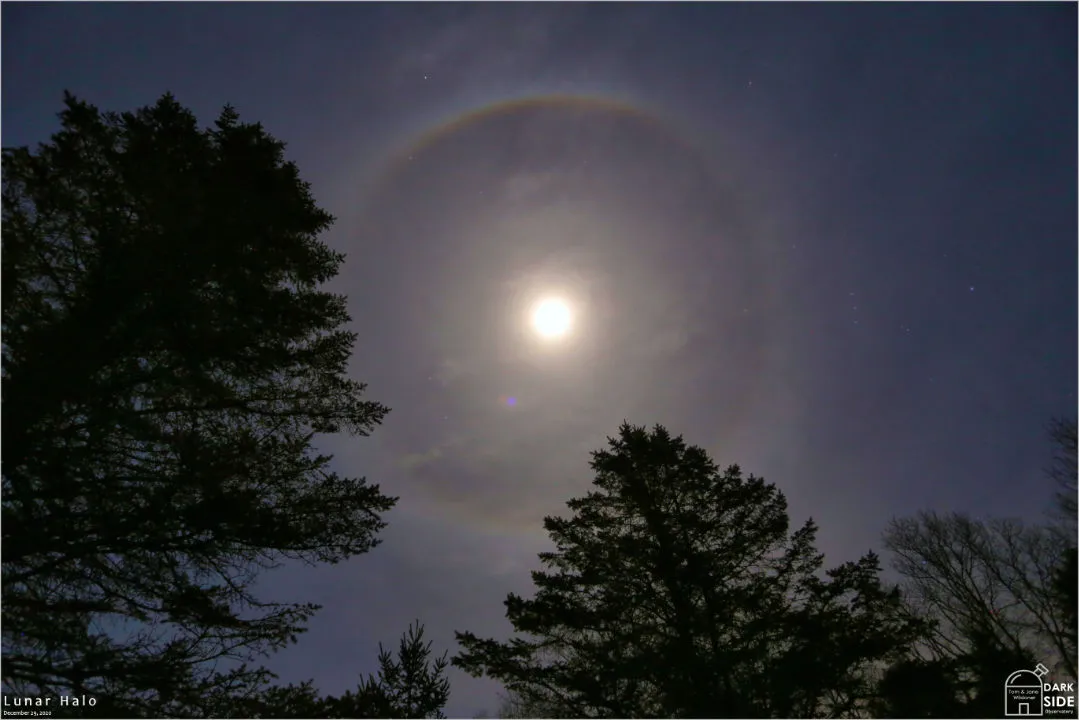
You may see a bright halo around the Moon when you step outside to observe a full Moon, and this is a well-known phenomenon.
It occurs because light from the Moon is passing through surrounding clouds, causing the appearance of haloes or rings of light and other atmospheric phenomena.
If you're observing the Flower Moon, can you spot any tricks of light caused by the bright lunar glare?
Observe, sketch, photograph and marvel

Head out and observe the full Moon and get to know its many interesting features.
Even a modest pair of binoculars will give you a closer look, enabling you to explore craters and the lunar maria - or seas.
Then observe the Moon throughout the weeks ahead and see how the phases of the Moon throw shadows on some of those same craters, causing them to appear much differently.
See if you can spot the moonlanding sites with our guide to locating the Apollo landing sites on the Moon.
Sketch the lunar surface then compare your sketchings with family and friends. Find out more in our guide on how to sketch the Moon.
Or photograph the Moon. You don't need a fancy DSLR to capture an image of the Moon.
If you have a smartphone tripod - or can balance your phone steadily while it's pointed at the Moon - and if your phone's camera has a 'pro' photography mode, tweak the ISO, white balance and exposure time and see what you can achieve.
Read our guide on how to photograph the Moon with a smartphone for more advice.
If you do manage to capture an image of the Flower Moon, don't forget to send us your images.

